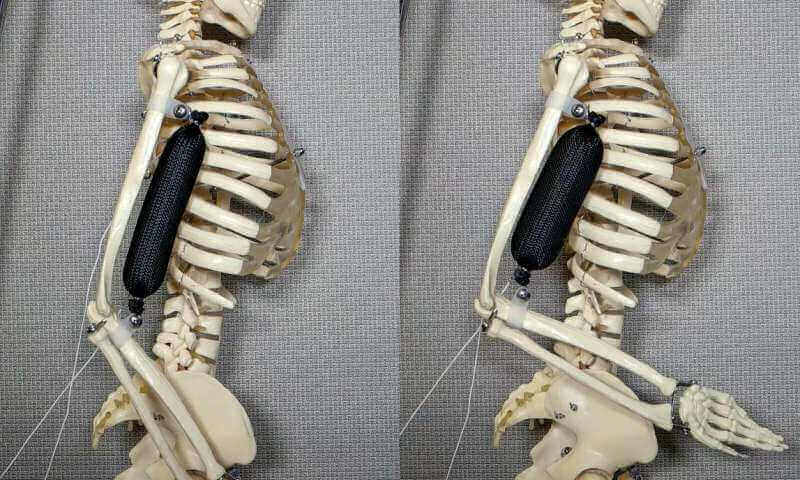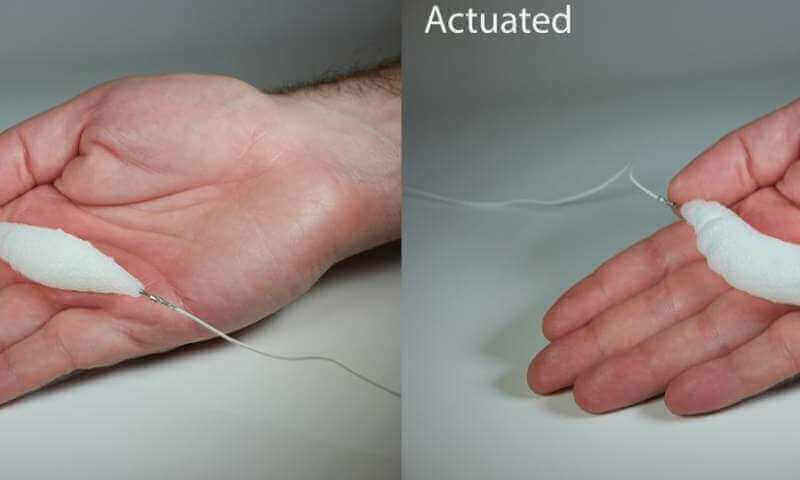Columbia Engineering researchers develop breakthrough in robotics with 3D printed soft muscles, three times stronger than natural muscles.
Researchers are developing ways in which we can improve the capabilities and formation of robots, and 3D printing technology has played a pivotal role. The latest development in this field could bring us closer to seeing robots helping humans in hospitals or with other delicate tasks.
“Soft Material for Soft Actuators” is a study that took place within Columbia Engineering’s Creative Machines lab, led by mechanical engineering professor and 3D printing pioneer Hod Lipson. The research team developed electrically-actuated artificial muscles, an advancement that could lead to a major breakthrough in soft robotics.
To create these soft composite actuators, the researchers used 3D printers. As a result, they solved a long-standing issue by managing to construct soft robotics that can mimic natural biological systems.
In fact, the self-contained soft actuator is three times stronger than natural muscle, and can even lift 1,000 times its own weight. Better yet, it has no need of external compressors or high voltage equipment either.
“We’ve been making great strides toward making robots minds, but robot bodies are still primitive… This is a big piece of the puzzle and, like biology, the new actuator can be shaped and reshaped a thousand ways. We’ve overcome one of the final barriers to making lifelike robots,” says Lipson.
What Does This Mean for the Future of Robotics?
As Lipson explains, this is a huge step in engineering robot bodies that can interact with humans through physical contact. Examples of such potential uses include; manufacturing and healthcare but also performing delicate tasks, picking up soft objects, and assisting humans.
Aslan Miriyev is the lead author of the study and a postdoctoral researcher in the Creative Machines lab. He adds:
“Our soft functional material may serve as robust soft muscle, possibly revolutionizing the way that soft robotic solutions are engineered today… It can push, pull, bend, twist, and lift weight. It’s the closest artificial material equivalent we have to a natural muscle.”
Better yet, the actuator is made from environmentally safe materials, is low cost, and also easy to create. In order to develop the actuator, the researchers first distributed ethanol throughout a silicone rubber matrix in micro-bubbles.
The result is a low density actuator that is still able to handle high strain and stress. The researchers then 3D printed the material into a preferred shape. Next, they electrically actuated the artificial muscle with just eight volts and a thin resistive wire.
Finally, the researchers could test their breakthrough development in real situations. They used the actuator for a variety of robotic applications, for example, electrically heating the muscle to 80°C and proving that the muscle can expand up to 900%.
Want to find out more about the soft actuator? Read more about the research on the academic journal Nature Communications.
Source: Eurek Alert


License: The text of "Columbia University Develops Soft Robotics That Are Stronger Than Natural Muscle" by All3DP is licensed under a Creative Commons Attribution 4.0 International License.